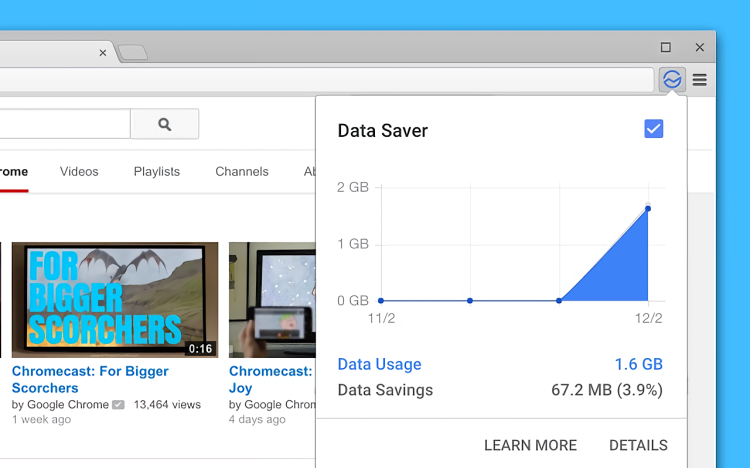testsetset
Data Saver, a Chrome browser feature that automatically improves page loading times using “built-in optimizations” and dedicated servers, is no more — at least in name. Google this afternoon announced that it’ll kill off the desktop Data Saver extension and relaunch Data Saver on Android as Lite mode.
Data Saver made its debut in March 2013 as part of the Chrome beta release for Android, and it officially arrived in January 2014 with Chrome 32 for Android and iOS. At the time, Google said it could reduce data usage by up to 50%.
“Since we introduced Data Saver in Chrome, we’ve reduced users’ data usage by up to 60 percent,” wrote Lite mode technical lead Ben Greenstein and Chrome product manager Nancy Gao in a blog post today. “But now, the feature is expanding to provide more benefits in addition to data savings.”

June 5th: The AI Audit in NYC
Join us next week in NYC to engage with top executive leaders, delving into strategies for auditing AI models to ensure fairness, optimal performance, and ethical compliance across diverse organizations. Secure your attendance for this exclusive invite-only event.
Toward that end, Lite mode — which kicks in when Chrome estimates the effective network connection type is “2G” or “slow-2G,” or if it determines it’ll take more than five seconds for text and images to appear — speeds up page loading times “considerably” and reduces memory usage, in some cases by a factor of two. Where HTTPS pages are concerned, only the URL is shared with Google, while identifying information — such as cookies, login information, and personalized page content — is not.
To give Lite mode a go, tap the corresponding Settings menu toggle in Chrome on Android. Alternatively, navigating to chrome://flags and setting the #force-effective-connection-type flag any 2G option will force Lite mode even on fast connections.
The latest stable version of Chrome on Android indicates in the URL bar when a lightweight version of a web page — a Lite page — is being displayed. Tapping the indicator shows additional information and provides an option to load the original version of the page.
Web developers can choose not to enable Lite mode for visitors by including a “no-transform” directive in the cache-control header of the original page’s main HTML response, and Google says that Chrome will automatically disable Lite mode on a per-site basis when it detects that “users frequently opt to load the original page.”
Lite mode isn’t Google’s sole effort to make mobile browsing a more pleasant experience. Its accelerated mobile pages (AMP) project, an open source suite of technologies that makes it easier for publishers to create “mobile-friendly” web products, includes a format, AMP Lite, that compresses images and image data, among other things. According to the company, AMP Lite pages take up 45% fewer bytes than standard AMP pages.


